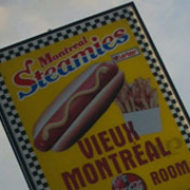An offhand comment in Joel Schalit’s blog entry led me to check out the work of Scientist. “Scientist Rids the World of the Curse of the Vampires” is an amazing album. Black Uhuru was my favorite reggae act back in the day, and actually my first exposure to dub before I knew it was a “thing” (ca. 1987). But my dub education has been completely haphazard. I wasn’t even aware of the existence of Scientist until I read Joel’s entry, and it turns out that I like him even better than Tubby (Lee Perry isn’t as much my thing). Clearly, I need a more systematic education in dub.
——-
Even since childhood, I hated lawns (also, to be fair hedges). I grew up in a house with a lot of lawn and it required a lot of maintenance. Even though I played outside, I never really appreciated it. I saw lawnwork as something straight out of The Myth of Sisyphus since grass is a fussy plant — difficult to keep alive but not something you can simply let grow. I warmed to the lawn concept a little in Pittsburgh, mostly because Carrie ripped out half our back yard to create a lush and beautiful garden and the remaining lawn could easily be dispatched with the push mower we’d picked up for $5 at a garage sale (it cost $25 to sharpen). But really, I still didn’t believe in lawns. They seemed absurd, as opposed to gardens, which were both more beautiful and more useful.
Then I saw the lawn at King’s College in Cambridge.
The picture doesn’t really convey it, but there’s something about the color of the grass in the UK. Perhaps it’s that it’s grey and rainy all the time — the indirect and diffuse light creates sharper colors that just explode before your eyes. Or at least mine. So I guess that’s why England is the country that brought the world the lawn.
